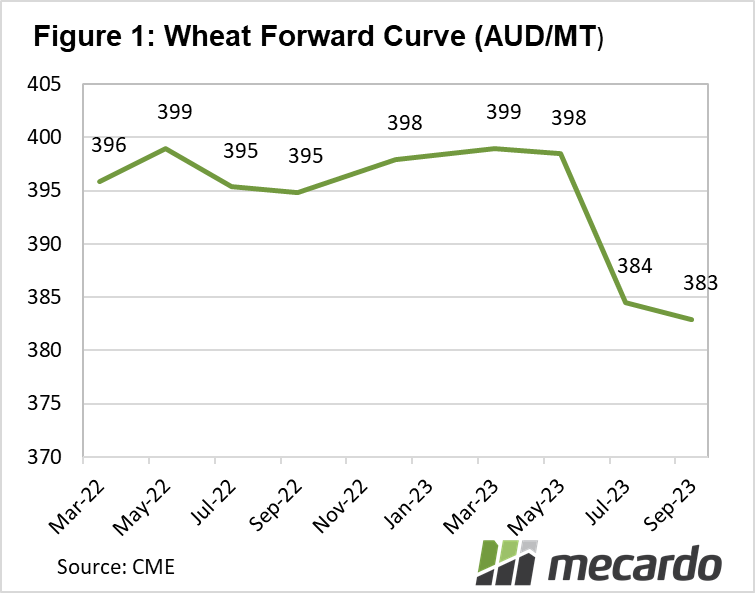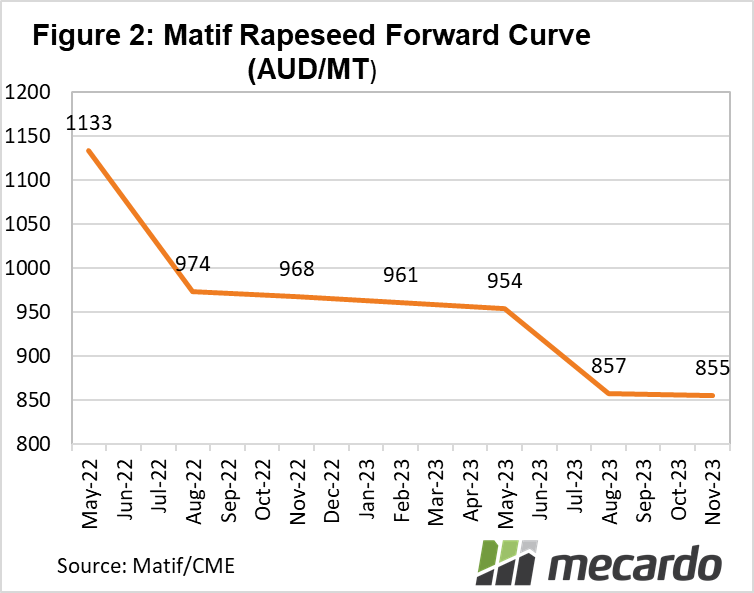There is likely plenty of grain still to be sold from the crop which has just been harvested, but it would be remiss to not start looking at new crop values and assessing value. Traditionally the first quarter of the year is the best time to forward sell, and we’re nearly halfway through it.
The theory, and it’s backed by the data, in forward selling in the first quarter of the year comes about from uncertainty. The Northern Hemisphere produces, and consumes, most of the worlds grain supplies.
We are currently in the winter in the northern hemisphere, and as we move towards spring issues can ‘crop’ up. If there’s dry sowing weather for spring crops, or late freezes for winter crops, or too much rain, markets build risk in to account for this. Geopolitical tensions are a bit unusual, but are adding some premium currently as well. As the season progresses, and crops develop, the risk premium comes out of the market.
Australian growers can take advantage of uncertainty by selling futures, swaps or forward contracts to lock in prices which include the risk premium.
The current wheat forward curve is relatively flat (figure 1). The spot price (March 22) sits at $396/t in our terms, and the December 22’ contract is at $398/t. This suggests that the market expects supply and demand to remain steady for much of the year. CME Soft Red Wheat (SRW) prices suggests supply isn’t going to pick up enough to see prices fall until the 2023 crop, and even then, it’s only $14 lower.
The extremely tight oilseed complex has the canola forward curve in backwardation. This means that future prices are lower than current prices, as supply is expected to increase to ease tight stocks, and see prices fall.
Still, new crop Matif Rapeseed is still priced above $950/t (figure 2), which despite being $180 of the spot price, is historically extremely strong. For the 2023/24 crop Matif is priced around $850/t, still an extremely profitable price for growing canola.
What does it mean?
Grain and oilseed prices are at extreme highs in international markets, but this doesn’t always translate into forward contracts locally. Before choosing which product to use to lock in price growers should assess how the forward price relates to the futures or swaps, and generally at this time of year, futures will offer better value.
Have any questions or comments?
Key Points
- The first quarter of the year usually provides some of the best selling opportunities of the year.
- Current futures markets are prices at historically very strong levels.
- Forward and futures markets should be compared before choosing a product to lock in price.
Click on figure to expand
Click on figure to expand
Data sources:
CME, Matif, Reuters



